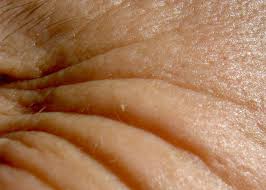From simple Line Parameters (Rz, Ra) via Frequency Distribution of Depth (FDD) to Volume Analysis
Various parameters like Rz or Rmax are used in order to describe the effect of an anti-ageing product. Very often discussed, but not really used in routine work, the volume of wrinkles is still a challenge in the field of claim support for cosmetic products. 3-dimensional data have to be available in high resolution to ensure a realistic and scientific analysis of facial structures. By defining and analyzing volume changes in facial wrinkle evaluations a key factor in the link of illusions (consumer’s view) and facts (scientific view) can be established.
Introducing the FOITSHD technique, the next generation of Fast Optical in vivo Topometry of Human Skin in High-Definition is presented. This excellent tool with a noise reducing and resolution increasing setup allows a new way of volume definition just as analysis of facial wrinkles in vivo in a touch free measuring geometry.
This the analysis of single wrinkles as well as the overall volume can be investigated. Results can be compared to basic line parameter like Rz or FDD (Frequency Distribution of Depth).
After nearly 20 years of FOITS history the new FOITSHD technique opens a wide range of statistically relevant data generation to support an anti-ageing product efficacy as well as basic facial wrinkle science to open the discussion of new product categories.
Abstract from Non-invasive diagnostic techniques in Clinical Dermatology
First investigations about contactless surface analysis of the skin were initialized in the year 1995. After a successful validation phase, the first publication of the new FOITS technology (Fast Optical In Vivo Topometry of Human Skin) can be found in 1997 [1]. In comparison to the replica-driven technique during the last decade, the touch-free technique of fringe projection became state of the art to investigate skin surface [2–5]









 Follow us on Linkedin!
Follow us on Linkedin!